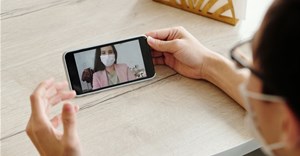Introducing the e-patient
Enter the e-patient. A term describing individuals who are proactive in their health and healthcare decisions.
E-patients are people that use digital resources such as the web, smartphones or other wearables to educate themselves about their condition and navigate the health system to track and manage their health. “In the age of consumerism, many e-patients, in managing their health, exhibit behaviours similar to that of people who research reviews before making online purchases, although the concept of an e-patient goes beyond that,” says Vanessa Carter, a Stanford University Medicine X e-patient scholar
A study conducted by the Office for National Statistics in the UK in 2018 found that 59% of women and 50% of men looked for health-related information online. In the US, 56% of people used websites and 46% used mobile phones to manage their health in 2018, according to Accenture Consulting’s 2018 Consumer Survey on Digital Health.
While there are no comprehensive statistics available for South Africa, Carter says the evolution of online resources and engagement has come a long way to empower patients. “Digital resources in the 21st century are going beyond the web and will include wearables and mobile applications that capture health data.”
Improving outcomes
Government involvement is key to driving the use of digital technology to improve the health of its citizens. E-health tech like electronic medical records, telemedicine and mobile electronic systems have been successfully used to improve health outcomes and empower populations. South Africa, however, has previously struggled to migrate traditional district health information systems to an electronic storage system that can be accessed by any health facility or practitioner. This has caused it to be ranked poorly in the global e-health maturity index.
Government initiatives to digitise healthcare have been evident in applications like MomConnect, a cell-phone based app that provides online resources to pregnant women. Since its creation, it has gained over 1.7-million users in over 95% of public health facilities to become one of the largest initiatives of its kind globally. NurseConnect is an extension of MomConnect for nurses to receive weekly information on aspects such as maternal health, family planning and new-born health.
Carter says that while these innovations are positive, governments could do more to bridge digital gaps and provide quality resources. “This includes wi-fi services in hospitals and clinics as well as websites for hospitals and clinics, both of which are fundamental resources that could empower patients and save time and money in researching online.”
She adds that a simple function on a hospital website notifying a patient about a medicine stockout for example, might save them an expensive trip to the hospital, long queues as well as reduce some of the heavy burden on overcrowded facilities.
Carter has no doubt that digital technology will be key in ensuring the sustainability of future healthcare provision, and that the e-patient will have a pivotal role to play.
“It is going to be a challenge to develop meaningful e-health systems if patients are not equal participants. Although e-patients are still evolving, especially in emerging countries like ours, they must not be undervalued as, in the future, they will be fundamental to collecting quality data in partnership with their medical professionals. Doctors can’t do this digital health transformation alone,” she adds.

















